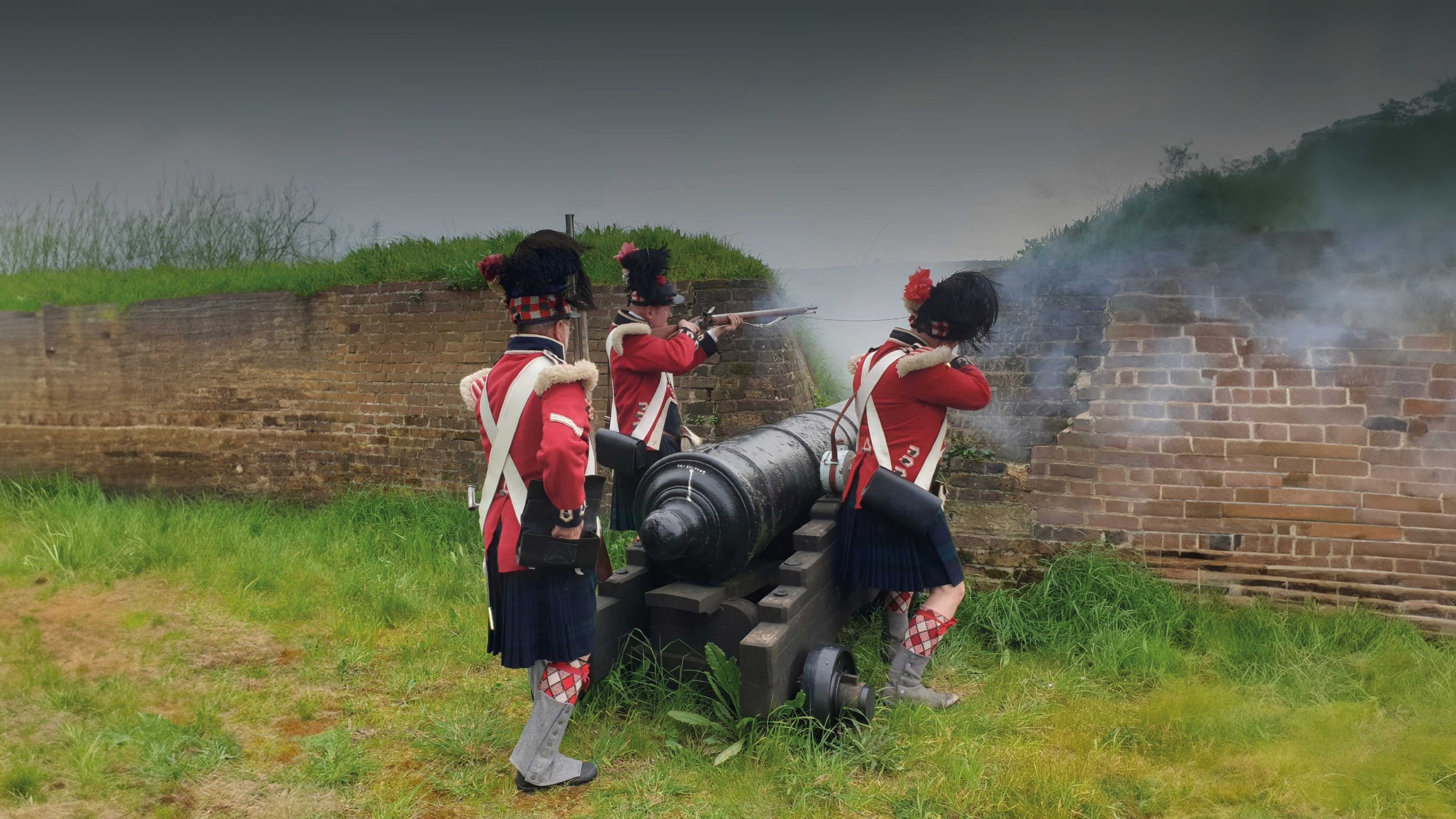
Our History
Raised in 1739 and originally numbered the 43rd Regiment, the 42nd Foot is the most senior of the Highland Regiments. The sombre appearance of the famous tartan and its original role of policing the Highlands led to it being called “The Black Watch”, a name we still bear to this day.
The 42nd’s Waterloo started on the 16th of June 1815, 2 days before the famous battle was to take place! After Napoleon had escaped from Elba and convinced his army to go against the King of France and join him in releasing terror against the Anglo-Dutch.
On the 15th of June some of the officers and soldiers from the 42nd performed at the Duchess of Richmond’s Waterloo Ball in Brussels whilst the rest of the regiments prepared themselves for battle. Then news reached Wellington that Napoleon’s armies were marching through France. In the early hours of the 16th of June the 42nd left almost immediately with many of the officers still in their white dress knee-breeches to confront Napoleon, marching to the tune of “Hieland Laddie”. After a gruelling journey in full marching order the 42nd arrived near to the French/ Belgium border at Quartre Bras by the Charleroi Road at about 3pm on the 16th of June and entered a 5 hour battle which may have been a factor in Wellington’s Army finally beating Napoleon.
Napoleon had sent out a force to deal with the Anglo-Dutch at Quatre-Bras whilst he dealt with the Prussians at Ligny hoping that it would divide the 2 forces. The French commanded by Marshal Ney arrived along the Charleroi Road after having dealt with the 79th Highlander’s offensive in the valley of Gemioncourt. The Brunswick Hussars were the 1st allied force at Quatre-Bras to attack the incoming French but failed miserably as most of the Brunswickers were raw troops and had little battle experience.
The 42nd were posted on a reverse slope in a line above the road. At first sight they were amazed at the advance of the French. As the French passed the 42nd, the older soldiers of the regiment weren’t satisfied and immediately opened fire and tried to restrain the French from advancing, they succeeded in causing a cessation of fire, but the Lancers were sitting to the rear of the cavalry and wheeled sharply round and advanced in admirable order directly upon the rear of the 42nd who recognized their advancing position and formed square, but just as the 2 flank companies were running to form rear rank the lancers penetrated the square. Instead of the square being destroyed by the French the lancers were either bayoneted or taken prisoner. All further attempts by the French were repelled.
On a sadder note the Commanding officer of the 42nd ( Lieut. Colonel Sir Robert Macara ) was killed and within the brief space of a few minutes the command of the regiment devolved upon 3 officers in succession, Lieut. Colonel Dick, who was severely wounded, Brevet Major Davidson, who was mortally wounded and Brevet Major Campbell who commanded the regiment during the remainder of the campaign.
The 42nd pinned down Marshal Ney and prevented him from going to Napoleon’s aid at Ligny which sealed Napoleon’s fate and stopped Marshal Ney’s men from wiping out Marshal Blucher’s Prussian army at Old Fortwartz, before the Prussian and British armies could merge together.
The 42nd lost 298 men at Quatre-Bras but were recognized in Wellington’s dispatch of the battle. On the 18th of June 1815 the 42nd held the left centre of Wellington’s position behind La Haye Sainte, against a French force of 13,000 bayonets. The 42nd on the day of Waterloo only lost 5 and had 45 injured. After the battle the wounded returned to their kind hosts in Brussels.
Historical Timeline
Raised in 1739 and originally numbered the 43rd Regiment, the 42nd Foot is the most senior of the Highland Regiments. The sombre appearance of the famous tartan and its original role of policing the Highlands led to it being called “The Black Watch”, a name we still bear to this day.
1715
After the Jacobite Rebellion, six companies of trustworthy Highlanders were formed to ‘police’ the Highlands and deter raiding fighting between clans.
1739
King George II added an additional four companies making a Regular Regiment of the Line, numbered the 43rd, the first Colonel was the Earl of Crawford and the first muster took place at Aberfeldy near Perth. A momument of a Highland Soldier in the uniform of the period stands overlooking the site.
1745
The Battle of Fontenoy, Belgium
1758
Fort Ticonderoga: French/Indian Wars
1776
Brooklyn, New York: American War of Independence
1795
Red Hackle awarded to 42nd, unique to this Regiment.
1801
Alexandria, Egypt: The 42nd took the Colours of Napoleon’s ‘Invincible’ Legion and were awarded the honour of wearing Sphinx on its Colours & Bonnet Badge
1807 - 1814
Peninsular Wars: The 42nd were awarded six Battle Honours and covered the embarkation of troops after the Battle of Corunna.
1814
Battle of Toulouse: The last major battle before Napoleon abdicated.
1815
Quatra Bras and the Battle of Waterloo
1861
The ‘Black Watch’ became an official part of the name.
2015
The Battle of Waterloo’s 200th anniversary, the 42nd Highlanders form ‘Square’ during Drill Practice prior to the main event.
2022
A weekend Camp and Drill meeting at Upnor Castle in Kent. Two local hostelries were visited for food and the imbibing of alcohol during one evening. The 42nd’s very special Bogoo breakfast was served to those who stayed the night.
